More digital nomads calling Bali home, but this comes at a price for the island and locals
A wave of remote workers – including many not on official visas - has led to skyrocketing property prices and other disamenities, potentially hurting Bali’s appeal.

Daria Ivanova (right) discusses ideas to develop her Russia-based consulting firm with her husband and business partner Roman from a co-working space in Denpasar, Bali. (Photo: CNA/Wisnu Agung Prasetyo)

This audio is generated by an AI tool.
DENPASAR, Bali: As snow began to thicken and cripple the day-to-day life of her friends and family back in Moscow, Daria Ivanova was packing her suitcase with sandals, summer dresses and bathing suits.
Since January, the 23-year-old social media consultant has been spending her nights at a rented room just minutes away from the beaches of Bali and her days running a small consultancy firm from a nearby co-working space.
“There’s a growing community of digital nomads and remote workers here (in Bali). So being here has been good for building a network and picking up new ideas,” Ivanova told CNA, adding that she also welcomes the change of pace and setting from her hometown in Russia.
“Every afternoon, I can stroll around the beaches and every weekend, I can travel and explore other parts of Bali.”
The idea of moving to Bali permanently has been on her mind for the last two-and-a-half years, since she first set foot on the island, famed for its stunning landscape and unique culture.
“I have worked from seven different countries but none of them comes close to beating Bali,” she said.
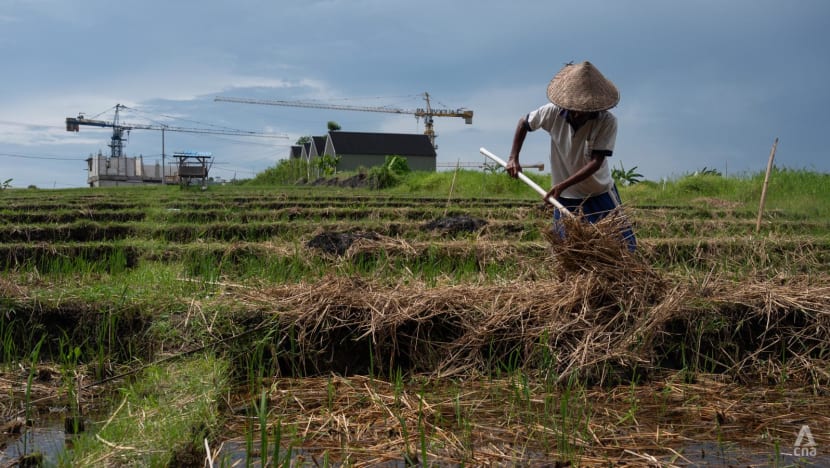
Remote working is becoming increasingly popular in a post-COVID-19 pandemic world, with more and more people aspiring to travel and become digital nomads like Ivanova.
According to a 2023 study by remote working consultancy firm, MBO Partners, there were 35 million digital nomads around the world, a 131 per cent increase compared to before the pandemic.
But experts and activists have blamed the influx of digital nomads for over-tourism and soaring property prices in many places around the world.
Southeast Asian hotspots like Thailand’s Phuket or Malaysia’s Langkawi saw an average of 8 per cent and 4 per cent hikes in property values respectively in 2024.
But even they pale in comparison to Bali’s capital Denpasar which according to several brokerage firms saw a 15.1 per cent rise in property values last year.
Property is in such high demand that sleepy agricultural villages are being transformed into boom towns filled with upscale restaurants and modern-looking villas.
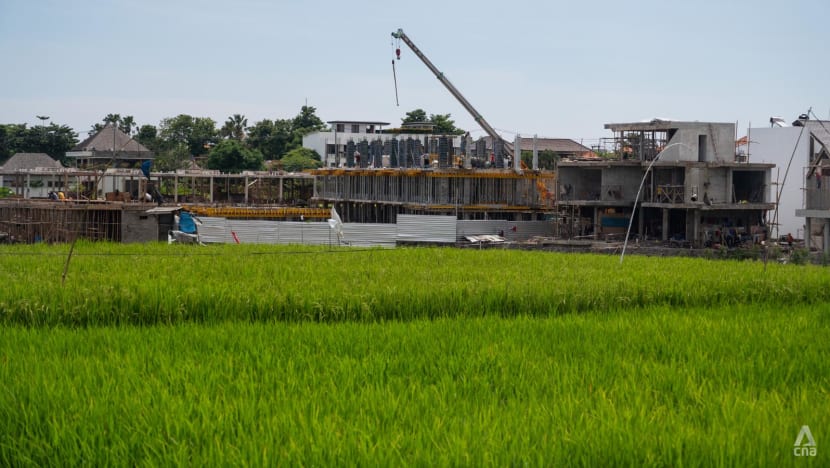
The steep hike is partly why Ivanova is still hesitant about calling Bali her second home.
“When I first came to Bali, everything was cheap. Now, I spend almost the same amount of money as I do in Moscow,” she said.
Despite the development, very few locals are reaping the benefits. And as the influx of digital nomads drives prices up, some Balinese are feeling priced out, fuelling friction between the locals and remote-working expats.
“Houses have become out of reach for us Balinese,” said Bali resident Nyoman Denny.
SKYROCKETING PRICES
Last year, Bali saw a 40 per cent increase in the number of digital nomads residing on the island compared to 2023. It is estimated that over 3,000 digital nomads now live there, according to the number of digital nomad visas granted annually.
While these numbers might not seem overwhelming for an island around eight times the size of Singapore with a population of around 4.4 million, it is possible that this is a gross-underestimation as it is possible to enter for a month on a tourist visa, which can then be renewed for an additional 30 days.
Some nationalities are exempt and do not require a visa at all.
The first wave of digital nomads came to Bali in the 2010s as high-speed internet was no longer confined to the downtown areas of major cities and began to penetrate smaller towns and suburbs.
“For these digital nomads, it is a lot cheaper to achieve the lifestyle that they want in Bali compared to where they come from,” Hansen Tandiyanto, the owner of Bali-based co-working space chain, Biliq, told CNA.
“Another reason is that Bali already had strong expat communities. It is easy for them to find someone who comes from the same country, speaks the same language and shares the same culture. So for them, Bali feels like a home away from home.”

The early wave of digital nomads was dominated by people in the technology industry and stock brokers, Hansen said. “Then the (COVID-19) pandemic happened and everyone realised that they can work from anywhere,” he said.
At the same time, Bali – an island where 80 per cent of its economy is linked to the tourism sector – was completely devastated.
According to the Bali manpower agency, at least 78,000 people lost their livelihoods at the height of the pandemic as hundreds of hotels, restaurants and shops had to stop operating temporarily or permanently.
With occupancy down to almost zero, hotel and villa owners began offering significant discounts in a bid to generate what little income they could.
“I was seeing villas which would have cost two million rupiah (US$119) a night being offered at two million rupiah per week or even per 15 days,” Febby Ayu, a 34-year-old accountant who moved to Bali from Jakarta told CNA.
The offer, made between 2020 and 2021 when countries around the world were still closing their borders, managed to convince hundreds of people from other Indonesian cities to temporarily reside in Bali.
“My office understood that where I work did not affect my productivity,” Febby said. “Although I have to admit that sometimes when I was at work all I could think about was ‘when can I hit the beach?’.”
But the massive price cut did not last long. In fact, prices started rising in January 2022 when Indonesia began to loosen its borders and offered a special visa for digital nomads.
Known formally as the C1 special visit visa, the pass allows foreigners to stay in the country for up to 60 days, which can be renewed twice. Applicants must among other criteria prove that they are employed at a company based outside of Indonesia and pay a one million rupiah application fee.
Holders of the visa are barred from making a living in Indonesia although they can still earn a salary by working remotely for businesses and clients based outside the country.

Apart from the C1 visa, other visas available include the tourist visa, valid for 30 days, and the E33G remote work visa, which allows for multiple entries and a stay of up to 12 months, for employees of non-Indonesian companies earning at least US$60,000 a year.
“Suddenly, rent became three to four times what they were during the pandemic,” Febby said, adding that over the last four years she had to move three times because she could no longer afford to live in her property.
While Febby can always go back to Jakarta, the same cannot be said for locals in Bali.
“We have to rent houses in the suburbs or another town altogether because we cannot afford to live in Denpasar anymore,” hotel clerk Ni Wayan Laksmi told CNA. “How are we supposed to compete with foreigners who are paid in dollars?”
LOSING ITS CHARM
Skyrocketing prices are not the only problem.
Around Denpasar, villas, retail spaces, bars and restaurants have sprung up, turning remote villages into boom towns.
“A few years ago, rice fields used to stretch as far as the eye can see. Now, there are only small patches of rice fields left which are completely surrounded by houses and buildings,” Bali resident Wayan Aditya, told CNA.
Before the digital nomad craze, Aditya said, tourists largely stuck to hotels and hostels. But most remote workers prefer the privacy and spaciousness offered by rented villas.
With the prospect of earning thousands of dollars each month, wealthy landowners began converting their rice fields into villas for rent. Those without capital to build rental homes are selling their vacant plots of land to investors from overseas or other parts of Indonesia.
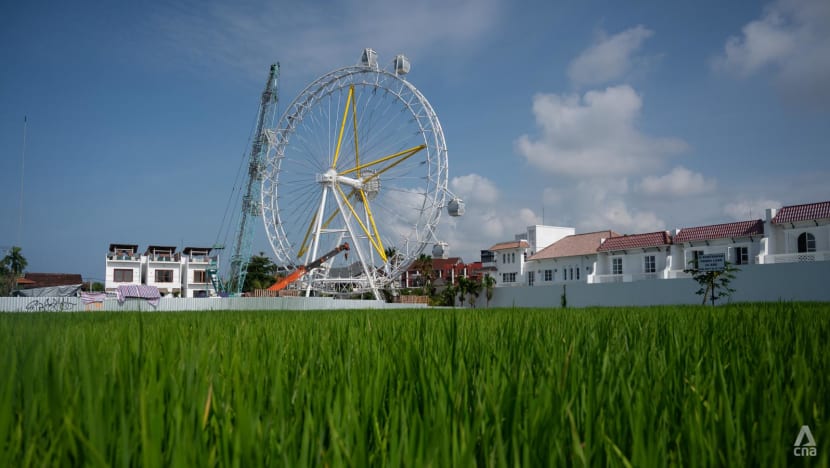
The COVID-19 pandemic added fuel to the fire. “People were selling their land because they had no choice. Bali is so reliant on tourism we had no other income,” Aditya continued.
According to property monitoring company AirDNA, there are currently 83,500 properties available for rent in Bali and the number has been growing by between 20 and 27 per cent every year.
Meanwhile, public infrastructure such as roads and drainage systems are struggling to keep up with this massive scale of development, leading to worsening traffic congestion and flooding.
“Bali is getting more crowded but the roads are not getting any bigger. Traffic is so bad, sometimes it takes two hours just to cover a distance of less than 10km,” transportation expert Djoko Setijowarno told CNA.
“Meanwhile, public transportation in Bali is virtually non-existent, forcing tourists to take taxis or rent a vehicle.”
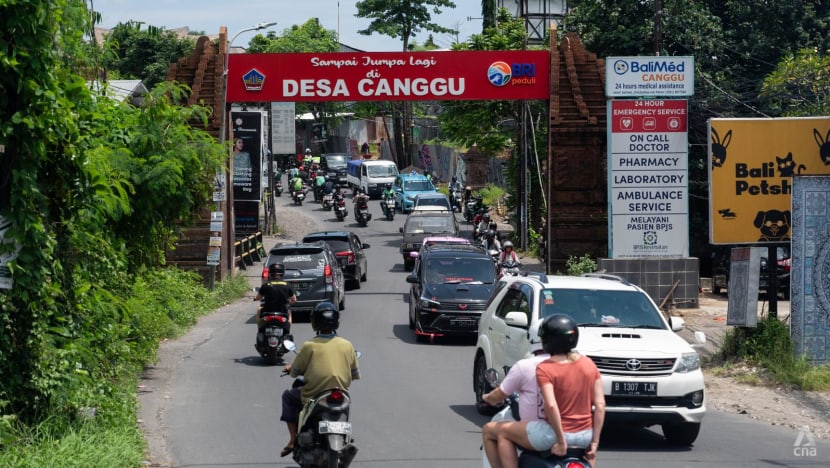
Bali is trying to address its crippling traffic by building a 33km light rail transit (LRT) network. The first two lines, which will connect Denpasar’s Ngurah Rai Airport with Cemagi beach in the north and Nusa Dua in the south, are expected to open by 2031.
Meanwhile, flooding is worsening as more and more land is being converted into settlements and buildings. On Feb 12, several streets and neighbourhoods in the greater Denpasar area were inundated by waist-high water. Dozens of foreigners were trapped inside their villas and had to be evacuated using life rafts.
For Christian Moser, a 60-year-old IT consultant from Germany, Bali is slowly losing its charm.
“I have seen a lot of development in Bali which is not sustainable. The quiet life, the view, the lush green rice fields, they are slowly going away or being spoiled by pollution and waste,” Moser, who has lived intermittently in Bali as a digital nomad for the last two years, told CNA.
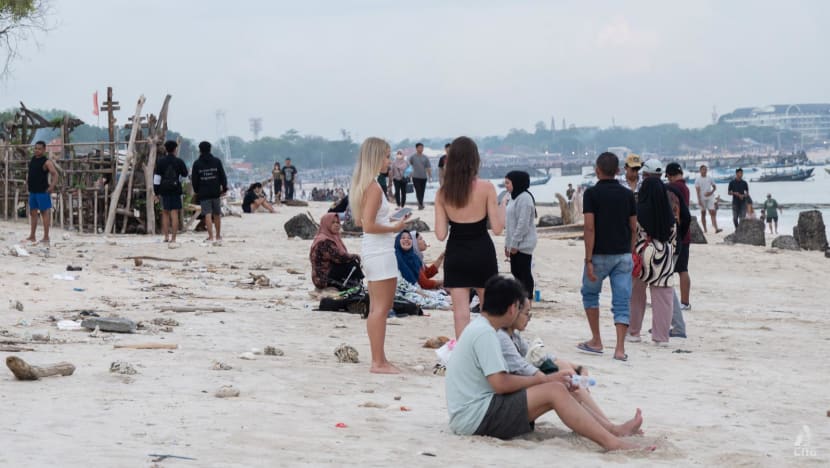
HARD TO STAY AWAY
As more foreigners decide to live in Bali as digital nomads, friction with locals becomes unavoidable.
In September of 2022, eight months after Indonesia introduced the digital nomad visa, an online petition emerged to repeal the policy.
The petitioners argued that some nomads have been disrespectful towards local customs and traditions, including staging late night parties, driving under the influence of alcohol and getting into brawls with locals or other foreigners. At least 8,000 signed the petition.
“The problem is not everyone who claims to be digital nomads are actually professionals working remotely. Many are just influencers looking to create tasteless content,” tourism expert Azril Azhari said.
“The government needs to be more selective in issuing the digital nomad visa.”
Tjok Bagus Pemayun, chief of the Bali tourism agency admitted that “the regulation must be strengthened” so that the visa is issued to those who deserve it. The island is currently in talks with the Immigration Ministry in Jakarta to work out the details of the planned amendment, he said.

However, Pemayun disagreed with the petitioners that the policy should be repealed entirely.
“Bali needs long-staying tourists with money to spend. They were the reasons why our economy stayed afloat during the COVID-19 pandemic,” he told CNA.
“The government also feels that working remotely is now becoming the norm. Working while holidaying is no longer the privilege of a few people in certain sectors. We must capitalise on this trend.”
Pemayun admitted that the policy has contributed to the over-development of some areas in Bali.
“Which is why we are trying to develop areas which are under-developed, so there won’t be an over-concentration of tourism in one part of Bali,” he said.
Experts said Indonesia should also look at other areas outside of Bali and see if they too can become hubs for digital nomads.
“Other countries have multiple tourism hubs. Meanwhile, for Indonesia, most tourists only know Bali and care little about visiting other places,” tourism expert Azril said.
“This is why the impact of digital nomads on over-tourism is felt more in Bali compared to places like Bangkok or Kuala Lumpur.”
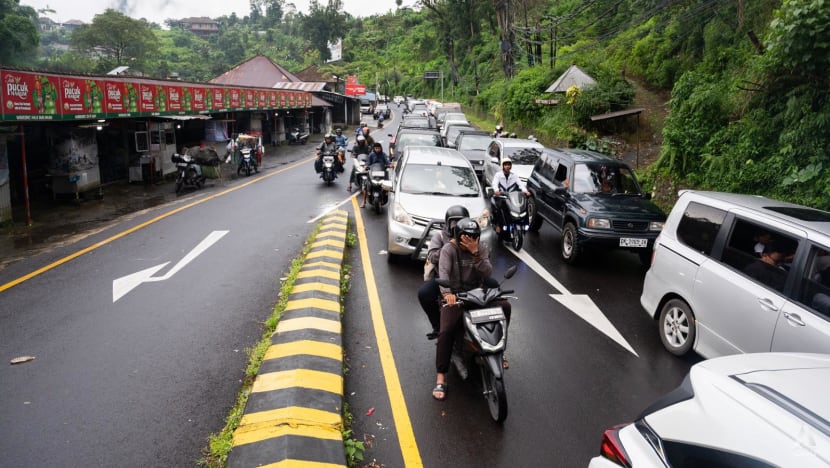
Although there is no official figure, some media outlets and research firms estimated that there could be tens of thousands of digital nomads in Thailand, making it one of the world’s most popular destinations for remote workers.
These nomads are spread among several popular tourist destinations in the country like Bangkok, Phuket and Chiang Mai.
Malaysia attracted some 1,500 digital nomads last year, 73 per cent of whom chose to stay close to the country’s bustling capital, Kuala Lumpur. However, there is a growing number of remote workers choosing to stay in tourist favourites like Penang and Langkawi.
“As for Indonesia, tourists only know Bali because Indonesia is not doing enough to promote other destinations,” tourism expert Azril said.
Of the almost 14 million international tourists who came to Indonesia last year, 5.5 million arrived via Bali’s Ngurah Rai Airport. In contrast, Jakarta’s Soekarno Hatta Airport last year welcomed 2.1 million international travellers.
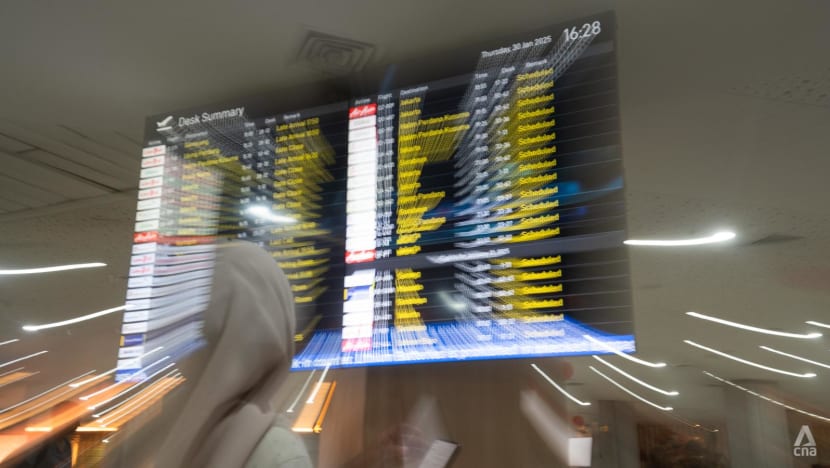
Since 2016, Indonesia has been trying to develop and promote 10 tourism destinations which it hopes will become “the new Bali”.
In 2023, the focus narrowed to five “super priority destinations”: North Sumatra’s Lake Toba; Central Java’s Borobudur; West Nusa Tenggara’s Mandalika; East Nusa Tenggara’s Labuan Bajo; and North Sulawesi’s Likupang.
But despite the efforts, their infrastructure and tourism ecosystems are nowhere as developed as Bali.
While it is possible to have high-speed internet access in even the remotest part of the globe using technology such as Elon Musk’s Starlink satellite-based network, some nomads still find it hard to stay away from Bali and move to these five destinations.
Tanay Mishra, an Indian-born digital marketing consultant, has been travelling all over the world as a digital nomad for the past 10 years. However, he kept coming back to Bali over and over again until eventually he decided a few years ago to permanently make the island his home.
“In Bali, you can find quiet beaches and bustling city centres just a few minutes drive from where you live. You will meet some of the friendliest people and have the best food,” the 35-year-old said.
“Yes, people complain about the traffic and how expensive everything is. But once you look past that, Bali will capture your heart and then you can never leave.”


















